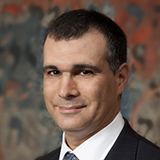TMS Technology for Mid-Market Shippers
.
Q: How have transportation management systems (TMS) evolved to serve shipper needs—and what is still missing?
A: Introduced about 30 years ago, early TMS focused on three functions: serving one mode, such as rail, truck, or air; creating solutions to determine the cost of shipments (rating); and paying freight bills. Solutions providers then moved on to develop decision-support algorithms for routing domestic freight. By 2000, the systems had expanded to cover all modes of freight all over the world. As with most enterprise application software markets, larger companies were the first to buy these products.
Today, many TMS companies focus on large, complex projects and requirements. These systems typically cost more than $1 million and take more than one year to implement. Because of the high cost and long implementation time, top-tier systems have not fared well in the mid-market space. Some smaller companies have emerged to focus on the mid-market TMS space. None have created compelling offerings, however, and have therefore not gained much traction.
For the TMS industry’s veteran players and industry analysts, it’s clear a gap exists in the mid-market. New products and companies need to fill that gap, because in spite of increased purchase interest, adoption levels have remained low.
Q: What kinds of companies need a TMS?
A: If businesses simply want to ensure shipments are delivered, they can use a small number of carriers and make simplistic decisions—or outsource the whole function—and they may not need TMS technology. But if they want to reduce shipping costs, improve on-time performance, gain visibility into their shipments, or take markup, then a TMS is valuable—and sophisticated shippers use TMS data in forming business strategies.
The more shippers want to save on transport costs or differentiate themselves, the more sophisticated their TMS must be. It is about matching the complexity of their needs with the right TMS. The majority of shippers find today’s TMS offerings are either not powerful enough, or just too big and expensive. So most shippers manage transportation with spreadsheets, try to build their own solution, or use a logistics service provider.
Increasingly, executives are realizing that sound transportation management makes companies more competitive. In fact, taking control of transportation can improve operating income by five to 10 percent, and boost stock prices by 10 to 20 percent, according to Accenture.
Q: What will the next generation of TMS offer?
A: They will focus on mid-market shippers and third-party logistics providers that use less-than-truckload and truckload extensively. These products will balance ease of use, rapid implementation, and big return on investment.
Until now, many shippers chose not to buy a TMS because of poor choices—the products were not designed by people with real domain experience, and the companies themselves were not staffed with people with quality experience in the enterprise software or transportation software markets.
But, more and more companies are seeing the value of the sound management of transportation. In fact, about 25 percent of respondents to a recent ARC Advisory survey said they are planning to buy or upgrade their TMS.

